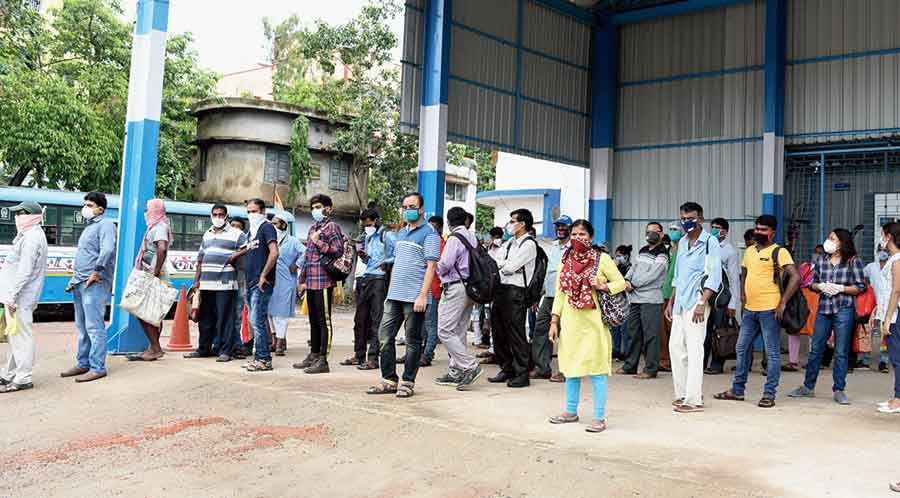Private bus operators from over a dozen routes in and around Calcutta have either withdrawn their vehicles or reduced their numbers because of the rising cost of fuel.
Many others are planning to do the same, unable to bear losses around the time when the transport sector is struggling to cope with the aftermath of the pandemic.
The price of diesel has increased from around Rs 65 a litre a year ago to around Rs 85. The expenses on fuel account for the biggest component of the daily expenses of running a bus.
The blow has been particularly hard for private bus operators, who do not have subsidies to fall back on unlike their government counterparts.
Only about five of the 27 buses on route 34C, which connects Noapara in north Calcutta to Esplanade, are now operational. A little over 14 of the 50 buses on route 201, which connects Belghoria with Sector V, are now on the roads. About 12 of the 23 buses on route 222, which stretches from Bonhooghly near Dunlop to Behala Chowrasta, are now available to passengers.
A number of private buses that ran between interiors of South 24-Parganas and Calcutta and its adjoining areas have been out of circulation for some time. The returns are too low to pay daily wages of the staff and spend on maintenance, the owners said.
Over 70 buses used to ply on route 12C, which connects Pailan in South 24-Parganas to Howrah. Operators said about 30 of them are now plying. The vehicle count has also been drastically reduced on the routes connecting Bosepukur in Kasba to Sarsuna, Howrah Maidan to Salt Lake and Barasat to Botanical Garden.
Owners said that earlier a private bus would ferry around 900 passengers throughout the day, making three or four trips. A bus would consume around 40 litres of diesel a day..
“The average take-home per day would be around Rs 1,400 to Rs 1,500. That has come down to around Rs 300 or Rs 400,” said Pradip Narayan Bose, of the West Bengal Bus and Minibus Owners Association. “So bus owners have either withdrawn their vehicles or cut down the number of daily trips.”
Last August, the state government had declared a waiver of all taxes and fines on lapsed fitness certificates for bus and minibus owners. The waiver, with retrospective effect from April 1, came at a time operators of private buses and minibuses had been struggling to survive from the twin blows of a steep hike in the diesel price and a drop in the passenger count because of the pandemic.
“Fuel accounts for the highest expenditure among all other components. Despite resumption of suburban trains and opening of schools, there hasn't been any significant rise in the number of passengers. And bus fares have remained the same. How do we survive?” asked Tapan Bandyopadhyay, of the Joint Council of Bus Syndicates.











